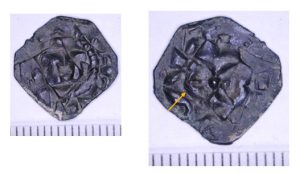Following the first phase of the numismatic and archaeometric analyses conducted on samples of early Medieval numismatic finds, a series of late Medieval coins from settlements located in the Colline Metallifere as well as from the Archaeological Museum of Florence were selected for pXRF and successive Isotopic analyses. These are specifically denari Enriciani (Henry III, IV and V of Franconia) in silver and mixture, a number of denari pisani minted in the name of the Emperor Frederick I, and sienese denari set in circulation by the communal authorities between the second half of the 12th and the first half of the 13th century.
The choice of selecting a series of sienese denari in the currently analyzed sample-set stems by the well documented Sienese exploitation of the of the silver mines located in the Colline Metallifere, certainly from the 13th century, making it necessary to verify if the isotopic signature of such finds differs from potentially expected results.
Among the analyzed lucchese denarii in mixture a number have also been inserted which present the perpendicular dash in the C of LVCA (Fig.1) that might indicate the first emissions of the so called “denaro volterrano”, lucchese denari minted in the first half of the 13th century characterized by the typical inflated letters and the mint traces in the shape of a circlet, a radiated circlet and a star (Fig.a-b-c). Parallelly the survey of the Tuscan coin finds continues for the setting up of a GIS databank.




